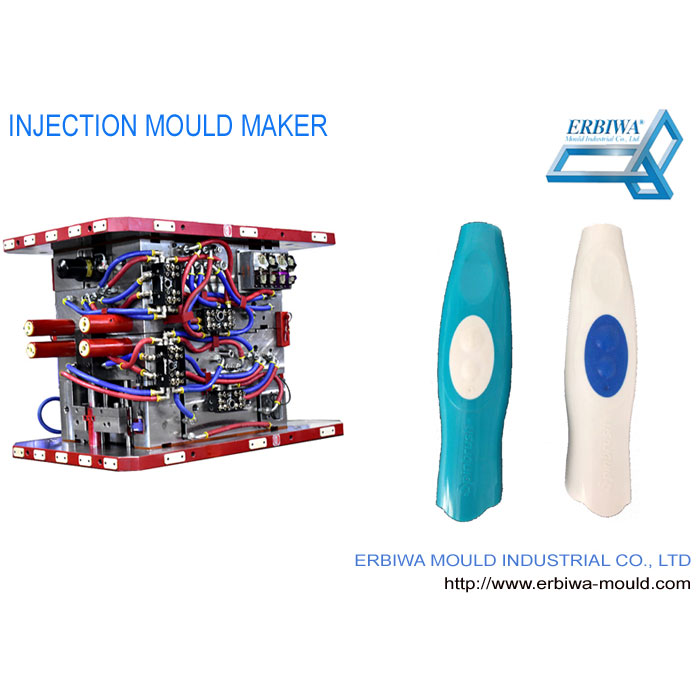What are the relation parameters of plastic injection mold size and shrinkage?
2023-10-17
Plastic injection mold is the most widely used in the production of thermoplastic parts. The corresponding processing equipment of plastic injection mold is the plastic injection molding machine. The plastic is first heated and fused in the bottom heating barrel of the injection machine, and then injected driven by the screw or plunger of the machine, the injection machine nozzle and the pouring system of plastic injection mold into the cavity of plastic injection mold, plastic cooling hardening molding, demoulding products. Its structure is usually formed by parts, gating system, guide parts, pushoutlet mechanism, temperature control system, exhaust system, support components and other parts. Manufacturing materials are usually plastic die steel modules, commonly used materials for carbon structural steel, carbon tool steel, alloy tool steel, high-speed steel, etc. injection molding processing method is usually only applicable to the production of hot plastic products, the production of plastic products with injection molding process is very wide, from daily necessities to all kinds of complex machinery, electrical appliances, transportation parts are molded with plastic injection mold, it is the most widely used in the production of plastic products a processing method.
When designing plastic injection mold, after determining the structure of plastic injection mold, each part of the plastic injection mold can be designed in detail, that is, to determine the size of each template and parts, cavity and core size, etc. At this time, major design parameters such as material shrinkage will be involved.
Therefore, the size of each part of the cavity can be determined only by mastering the shrinkage rate of forming plastics. Even if the selected plastic injection mold structure is correct, but the used parameters are improper, it is impossible to produce qualified plastic parts.
Plastic shrinkage rate and its influencing factors
Thermoplastics are characterized by expansion after heating, contraction after cooling, and of course the volume will shrink after pressure. In the process of injection molding, the molten plastic is first injected into the cavity of the plastic injection mold. After filling, the molten material is cooled and solidified from the plastic the contraction occurs when the plastic part is removed from the injection mold. This contraction is called forming contraction. During the period from the removal of plastic injection mold to stability, the size will still change slightly. One change is continued shrinkage, which is called post-shrinkage.
Another change is some hygroscopic plastics due to hygroscopic expansion. For example, when the water content of nylon 610 is 3%, the size increase is 2%. When the water content of glass fiber reinforced nylon 66 is 40%, the size increase is 0.3%. But it is the formative contraction that plays the main role.
At present, the method of determining the shrinkage rate of various plastics (forming contraction + after contraction) is generally recommended in the German national standard DIN16901. That is, at 23℃±0.1℃, the cavity size of plastic injection mold and after forming are placed for 24 hours, at 23℃ temperature, relatively wet the degree is 50±5% under the condition of measuring the corresponding plastic parts size difference.
The shrinkage rate S is expressed by the following formula: S={(d-m)/D}×100%(1)
Where: S- shrinkage rate; D- Mold size; M- Size of plastic parts.
If the mold cavity is calculated according to the known size of plastic parts and material shrinkage, it is D=M/(1-S). In order to simplify the calculation in the mold design, the following formula is generally used to calculate the mold size:
D=M+MS(2)
If a more accurate calculation is required, the following formula should be applied: D=M+MS+MS2(3)
However, when determining the shrinkage rate, because the actual shrinkage rate is affected by many factors, only approximate value can be used, so the calculation of cavity size by Formula (2) basically meets the requirements. In the manufacture of plastic injection mold, the cavity is processed according to the lower deviation, and the core is processed according to the upper deviation, so that it can be properly trimmed when necessary.
The main reason why it is difficult to determine the shrinkage rate accurately is, first of all, because the shrinkage rate of various plastics is not a fixed value, but a range. Because the shrinkage rate of the same material produced by different factories is not the same, even the shrinkage rate of the same material produced by different lot numbers in one factory is not the same.
Therefore, each factory can only provide users with the shrinkage range of the plastics produced by the factory. Secondly, the actual shrinkage rate in the forming process is also affected by the shape of plastic parts, the structure of plastic injection mold and forming conditions.



